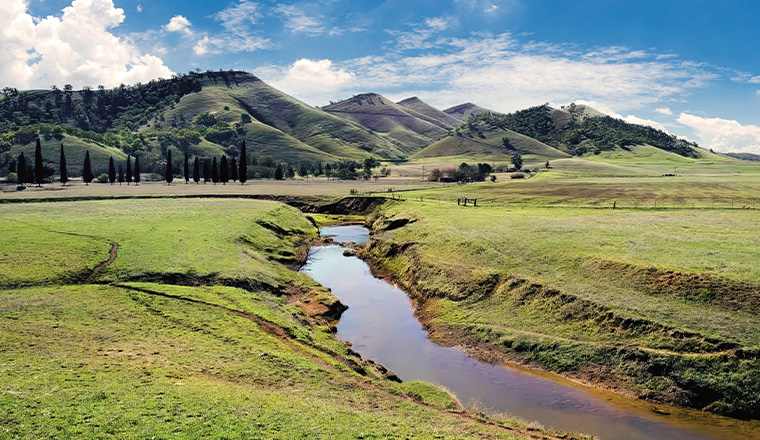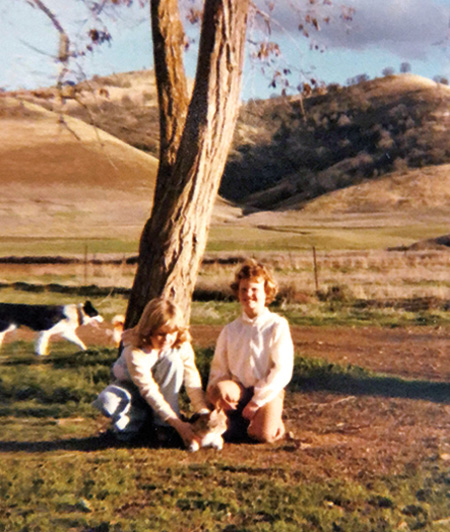Turning drought into abundance

Jamie Traynham’s insight into the Sites Reservoir project
Leonardo da Vinci once said, “Water is the driving force of all nature.” These words resonate deeply with those involved in agriculture. In recent years, the absence of water has had devastating impacts on California’s residents, preventing crops from being grown and causing a ripple effect across agricultural communities. As reliable water sources become endangered, a unique project in Northern California is problem-solving at the local level to keep this “driving force” sustainable for years to come.
The Sites Reservoir Project serves as a beacon of hope for communities that have endured years of drought. This project proposes the creation of a reservoir on the west side of the Sacramento Valley, in Glenn and Colusa counties, and would supply water for people, farms and the environment during dry periods.
Fifty years ago, California discovered that this area formed a natural bowl – a location where a reservoir could be built without requiring extensive dam construction or earth-moving efforts. Despite 40 years of studying and planning, the project failed to gain traction or include plans to benefit the local community – until recently.
In 2010, six entities – including local water agencies and counties – formed a joint project authority to ensure that local stakeholders participate in the development and future operations of Sites Reservoir. The reservoir will be cooperatively owned and operated at the local level, and each participant will pay to reap the benefits – including the state.
“This is the entire difference between how the state looked at the project and how we, as local water districts looked at it,” says Jamie Traynham. “We kept authority local.”
Jamie serves as treasurer for the joint project authority and is Chief Financial Officer at T&P Farms, a diverse farming operation in Northern California. She has also been a customer of Farm Credit for decades and participates on AgWest’s Local Advisory Committee. Additionally, she grew up in Colusa County, where today she and her husband farm rice, walnuts, almonds and row crops and raise cattle.

Jamie as a child on her family’s ranch in Sites Valley.
This creates an interesting twist: If the project goes as planned, Jamie’s childhood home and part of her ranch will be underwater.
“A lot of people are surprised that I am a proponent of this,” says Jamie, but to her, the answer is clear. “We can't survive in the Sacramento Valley without a more secure source of water and a way to store it.”
Water for Sites Reservoir will be diverted from other water sources during times of high precipitation. When full, the reservoir would hold up to 1.5 million acre feet of water, enough to serve 7.5 million people for an entire year.
“This whole project is about how to take a resource that is so important to everybody and make the best use out of it,” says Jamie. “To us, it has to be efficient, flexible and ensure everybody's working together.”
As part of the joint project authority, Jamie and the group spent time writing bylaws and agreements to protect the vision of how the Sites Reservoir was going to work. Almost a decade later, these bylaws are still the foundation for participants in the project.
If all approvals go as planned, construction on the reservoir could begin in 2026. By 2032, Sites could be delivering water.
“When this was coming together in 2010 all we heard was 'this is never going to happen,’” reflects Jamie. “We kept plugging away, problem-solving and taking next steps. You must stay positive, focused, and chip away at it.”
For others who want to start new projects to help their communities, Jamie has some advice.
“Think outside the box. Anybody who is in agriculture knows that we solve problems. We figure out how to get things done when nature throws a curveball. We're good at being adaptive.”
She also reminds us of the power of cooperation. “See how to work with your local community or water districts to collaborate on a project. Then look for a funding source to apply for. Work together. Use each other's expertise. You can get stuff done.”
Return to Stories home page.